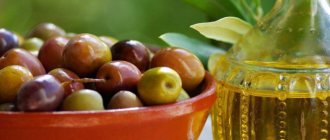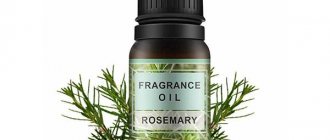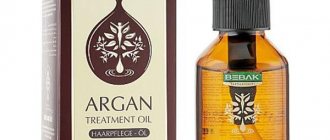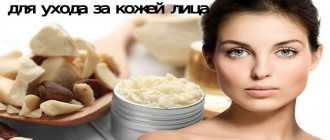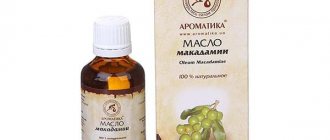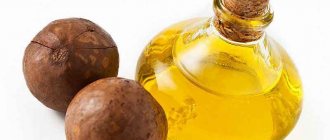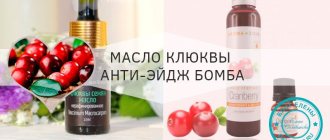Unexpected wrinkles on the face and around the eyes reveal all the details about a person’s age. To reduce age-related changes, you need to properly care for your skin and hide all its imperfections. Then folk methods come to the rescue. Jojoba oil works especially well against wrinkles on the face and around the eyes.
History and description
The source of the beneficial substance is the fruits of Simmondsia sinensis. The homeland of the evergreen shrub is considered to be the territory on the border of Mexico and America. But the reference to China in the title is wrong: culture does not grow in this country. The confusion arose due to a misreading, however, even today Simmondsia is called Chinese instead of Californian (which would be more correct).
The liquid, rich in beneficial properties, is extracted by cold pressing from the seeds and nuts of the plant. The fruits resemble acorns in appearance and contain about 50% oil. In its composition and consistency, the substance resembles wax or ether. It is thick, transparent, golden yellow, practically odorless, but this is only relevant at room temperature. At 0 °C the oil hardens, turns into a waxy paste, at the same time losing its transparency, and at +10 °C it begins to melt. Sometimes those who have used the product note that the cosmetic product smells slightly of grease.
Interesting to know. According to scientists, the oily liquid was mined 2000 years ago. It was discovered in a tightly sealed vessel during the excavation of Egyptian pyramids. It is noteworthy that over such a significant period of time the oil did not lose its valuable properties.
The natural product was honored by Native Americans and Aztecs. Local residents of South America and Mexico used the oil for magical rituals, used it as a balm for skin and hair, and also as a disinfectant and healing agent for wounds, burns and ulcers. Jojoba also served as a kind of “liquid currency”. It could be exchanged for food, weapons or jewelry.
In the 20s of the 20th century, the beneficial properties of the oil were noticed by employees of a tree nursery in Arizona (USA), who used the liquid instead of machine lubricant. The jojoba seeds were sent to the University of Arizona.
Scientists have established: in its composition, an oily substance of plant origin is very similar to spermaceti - a waxy fat that is obtained from a special compartment located in the head of the sperm whale, and is used in the manufacture of candles, ointments, creams, etc. This feature was remembered about half a century later, when whaling declined due to a sharp decline in the number of marine mammals.
The cosmetic properties of jojoba were studied more thoroughly, and in the mid-70s, the wild shrub began to be cultivated for industrial purposes, first in Israel and then in the USA.
Today, in addition to these two countries, the production of valuable liquid is carried out in Mexico, Australia, Costa Rica, Paraguay, etc. This is not easy, since the plant needs a special climate, and the fruits begin to bear 3-4 years after planting (they are collected by hand) .
In cosmetology, jojoba oil is considered a base oil. The valuable substance is used in its pure form or added to cosmetic products for skin and hair. At home, it is often combined with ethers, which, due to their highly concentrated composition, are not used on their own.
The raw material for obtaining the oily substance—jojoba seeds—is sold on popular Internet sites that promise to import products from China. However, it is quite problematic to obtain a waxy liquid on your own.
Natural beauty recipes
Jojoba essential oil for the face is described by cosmetologists as being more active when used in combination with other products. The latter do not necessarily have to be natural.
To enhance the beneficial effects of your favorite products - creams, balms and lotions - you should add jojoba oil for the face to their composition. Reviews from cosmetologists contain many effective recipes for those who, in an effort to become even more beautiful, accept only natural products. Recipes for cosmetic products made with healing wax will help solve any skin problems.
Fans of natural ways to maintain beauty procedures using products that include jojoba essential oil for the face are advised to use the reviews both during the day and at night.
The correct combination of jojoba with the recommended ingredients will not only delay the onset of old age, but also restore youth and beauty to the face.
Beneficial features
Jojoba has a rich composition, which distinguishes it from its analogues. First of all, there is a large amount of vitamin E, known for its anti-inflammatory, regenerating, and moisture-retaining properties. Also, thanks to this nutritious component, the oil does not oxidize, does not become rancid, and remains fresh for a long time.
The youth and blooming appearance of the skin is ensured not only by vitamin E. Jojoba contains ceramides (or ceramides) - compounds responsible for the hydration of the epidermis, as well as protein, thanks to which the skin acquires firmness and elasticity. The last component is very similar in structure to collagen.
also rich in fatty acids: oleic, erucic, palmitic, etc. These substances regenerate the skin, protect it from negative environmental factors and rejuvenate it. Fatty alcohols (eicosene, etc.) improve blood circulation, which has a positive effect on the nutrition of dermal cells and supplying them with oxygen.
Attention! Oil from the seeds of the jojoba bush is hypoallergenic, so it is considered safe even for small children. It can cause allergies only in case of individual intolerance or the use of a low-quality substance.
Effective home wraps with jojoba oil
In addition to skin care using masks, there are also recipes for effective home wraps. They help fight stretch marks and cellulite.
Wrapping is one of the care methods in aroma therapy. How can you make a mixture? The basis is fatty oils, dirt or clay. Concentrated oils are added to them: citrus, cinnamon, myrrh, juniper. Here it is important to take into account the concentration of the ether; it should not be more than 2-3%.
Cover the body with a thick layer of polyethylene on areas that require adjustment. To achieve a greater effect, you can also wear warm pants and wrap yourself in a blanket. Time ranges from 15-60 minutes. After this, the film is removed and the mixture is washed off. But you should not go outside for at least an hour after the wraps. You need to repeat every other day for 3 weeks. Some recipes:
to create a mixture for cellulite you will need: 50 grams of jojoba oil, 10 drops each of juniper and grapefruit ether and 5 drops each of myrrh and clove ether; to get rid of stretch marks, there is the following mixture: the base is 20 grams of jojoba oil, 15 grams of avocado oil, 10 grams of wheat germ oil and 5 grams of tamanu oil. From concentrated oils you will need 10 drops each of lavender, myrrh and tangerine.
As you can see, the scope of application of jojoba oil for the skin is very wide, practically unlimited. And this despite the fact that it has no contraindications, except for individual intolerance.
Indications for use
The diverse and in many ways unique composition has led to a wide range of uses for the oil, since it:
- nourishes, softens and refreshes the skin;
- restores its lipid balance,
- enhances the protective functions of the dermis;
- normalizes the functioning of the sebaceous glands;
- retains moisture, prevents dehydration and flaking of the skin;
- improves blood circulation;
- stimulates the regeneration process of the epidermis;
- has a lifting effect, tightens the skin and makes it more elastic;
- smoothes out fine wrinkles around the eyes;
- improves complexion and texture;
- protects skin from ultraviolet radiation;
- protects lips from chapping;
- provides anti-inflammatory, bactericidal, healing and antifungal effects, therefore it is used as an adjuvant in the treatment of dermatological ailments;
- soothes irritated epidermis;
- serves as a prevention of age-related changes (pigmentation, wrinkle formation, etc.).
Scientists from the University of Michigan have determined that jojoba destroys bacteria and fungi on the skin that cause allergic reactions. And at Ben-Gurion University (Israel) they established the benefits of oil in the treatment of psoriasis, eliminating redness, swelling, and burning sensation.
Jojoba is universal and therefore suitable for all skin types. The natural substance has the greatest positive effect on dry, dehydrated, cracked, flaky and chapped dermis. The oily liquid gently cares for inflamed, irritation-prone, sensitive epidermis.
Those with sagging, aging skin will appreciate the rejuvenating properties of the oil. Also, due to its anti-inflammatory, bactericidal effect, jojoba is suitable for combination and problematic skin suffering from acne and comedones.
Jojoba oil for face. Application
Using jojoba oil on the face very quickly helps to get the expected result. It gives excellent results when used to moisturize and rejuvenate the skin; it refreshes, soothes, cleanses, and evens out the tone.
Cosmetologists note the benefits of jojoba oil when using it instead of cream on small areas with rough skin prone to flaking. The exceptional benefits of undiluted oil are noted for the skin of the eyelids, as well as dry lips. Suitable for a comprehensive effect on dermatitis, damage and other skin defects.
It is worth noting the benefits in getting rid of acne. The melting structure does not clog pores, does not interfere with the natural breathing of the skin, and also effectively fights microbes that cause rashes, restoring damaged areas.
Helps in getting rid of wrinkles. The components easily penetrate into the depths of the skin, awakening the epidermis’s own protective forces to combat aging. This reduces the depth of wrinkles and stops the formation of new ones.
Where to buy and how to store
Oily liquid does not belong to the category of cheap products. The high cost of the natural product is due to the complexity of growing the source of raw materials - Simmondsia sinensis, as well as the peculiarities of the technological process. You can buy waxy liquid from jojoba seeds at a pharmacy or stores specializing in the sale of organic products and natural oils.
As a rule, the product is sold in dark glass bottles with a volume of 30 to 100 ml. Some options:
- jojoba from the Elfarma company - approximately 340 rubles per 30 ml;
- oil from the Botanika brand - about 300 rubles for the same amount;
- product from Aspera - approximately 170 rubles per 10 ml;
- Jojoba Oil from Now Foods (USA) - about 1200 rubles for 118 ml, etc.
Larger bottles of 125 or 250 ml from Thailand also cost a lot (1150 and 2150 rubles, respectively). There are also offers for selling oily liquid in bulk. Such sales representatives promise delivery directly from Spain and Israel. The cost of 1 liter of unrefined oil is about 2000 rubles.
The purchased product must be placed in a place protected from sunlight. Temperature - up to +25 °C. After each use, the bottle should be tightly sealed. Due to its chemical composition, the oil does not oxidize for a long time and no sediment appears in it.
Hardening and further melting of jojoba do not affect its beneficial properties. Although there is another opinion. Therefore, the lower limit of the permissible temperature for this product is +5 °C. Do not keep the bottle in the refrigerator.
Attention! Despite the fact that jojoba is a natural preservative, manufacturers limit the shelf life of the product to 12-24 months. Look for this information on the packaging. It is recommended to empty the opened bottle within six months.
Origin and chemical composition
The source of this valuable product is the fruits of an evergreen tree growing in the arid areas of America - Simmondsia sinensis. The nuts are removed by hand and then cold pressed. The process produces a semi-liquid golden substance with a subtle aroma, which hardens at zero temperature.
Based on its physical and chemical properties, the substance called “oil” would be more appropriately classified as “vegetable wax”.
General recommendations
Jojoba can be used all year round. In the cold season, the oil will protect the skin from moisture loss and flaking, and in the heat it will enhance the effect of sunscreen cosmetics. Before use, you can slightly warm the oily liquid in a water bath. This will make it easier for you to distribute the thick product over your skin.
Take your time to apply the product you just purchased to your face. First, test the jojoba on your wrist or inner elbow. Add some oil and wait. Ideally, it is recommended to monitor the treated skin for at least 12 hours. The absence of redness, peeling, itching and other symptoms of individual intolerance to the product is an indication for its use in pure form or as part of face masks.
Before using jojoba, thoroughly cleanse your skin of impurities and makeup. Pat it dry with a towel to dry thoroughly. If you add other components to the oil, do so immediately before using the mixture. Distribute the pure product or a mask prepared on its basis using a cotton swab.
Apply jojoba to the skin around the eyes for no more than 15 minutes about once a week. Do not leave the nourishing product on your face overnight. When washing your face, use plenty of warm water. Periodically give your skin the opportunity to take a break from the course of procedures, which consists of 10–15 masks, 1–2 times a week. Take a break for 1–2 months.
Oil composition
This product is completely unique in its composition, thanks to which the effect of its effect on the skin cannot be compared with anything else. It consists of:
- palmitic acid (it is responsible for the regeneration of epithelial cells, as well as for increasing the number of collagen fibers);
- gadoleic acid (very rare and found in only a few products, smoothes wrinkles and protects it from moisture loss);
- oleic acid (is a kind of “protector”, because it forms a film on the surface of the face);
- stearic acid (it moisturizes the skin and nourishes it with all the necessary elements);
- eicosenoic acid (rarely found, known for its restorative properties);
- collagen (fights age-related skin changes);
- vitamin E (a powerful antioxidant that slows down aging, smooths out wrinkles and gives the face a healthy color).
Important! Jojoba oil can be used for any skin type. It will always give only a positive effect to the face and save you from wrinkles.
After 3-4 weeks of using this product, you can notice many positive results. For example:
- disappearance of small facial wrinkles, smoothing of deep ones;
- gaining a healthy complexion;
- reduction in the number of acne and other rashes;
- increasing skin elasticity;
- disappearance of redness;
- softness and moisture;
- protection against ultraviolet radiation.
Important! Pure jojoba oil should be used as an anti-wrinkle remedy no more than once a day for no more than 20 minutes at a time.
Jojoba oil is a truly unique and natural product that can get rid of wrinkles and give youth to the skin of the face, in particular the area around the eyes. Few people are indifferent to this organic product and many express delight in reviews on the Internet.
Methods of application
Oil has become widespread in cosmetology. After all, jojoba benefits the skin of the face, body and lips, hair and nails. They enrich creams, lotions, balms, conditioners, soaps and other products.
At home, the options for using the oil were determined by the thick consistency of the extract from the fruits of Simmondsia sinensis. In its pure form, the valuable product is most often applied to the hair or specifically to individual areas of the skin. For example, if you need to lubricate rough, cracked, damaged areas on the elbows, heels, etc.
In other cases, jojoba is mixed with other nutritional ingredients, added to homemade masks, used as a base for esters or “companions” for other base oily liquids (including when performing massage).
Attention! Jojoba is not used internally, since it is practically not absorbed. This sets it apart from other all-purpose oils, such as coconut or apricot kernel oils.
For face and eyelids
The most popular ways to use jojoba oil are;
- Makeup removal . The fatty, oily liquid perfectly cleanses the skin even from waterproof cosmetics.
- Preparation of creams and face masks . Healing mixtures are made based on food products, freshly squeezed juices and purees. A common ingredient in the formulations are various essential oils.
- Enrichment of finished products: creams, lotions, etc. For every 10 parts of cosmetic product, take 1 part of jojoba.
For daily care, you can mix this oil with other basic oils: avocado, almond, etc. The proportion is 1:1. The mixture is suitable for removing makeup, softening and moisturizing the skin after a shower.
Options for useful facial formulations:
- For skin elasticity . To prepare this remedy, measure out 1 tbsp. l. jojoba and add 1-2 drops of patchouli, sandalwood, chamomile ether.
- Against acne . In a 1:1 ratio, combine 2 basic oily liquids - jojoba and grape seed. For each tablespoon of this base, take 1-2 drops of lavender, clove, cedar, and tea tree ether. Lubricate problem areas of the skin several times a day or apply gauze wipes soaked in the composition for 15–20 minutes (2 times a day).
- For wrinkles . In one container, mix jojoba and avocado or almond oil (1:1). You can combine all three ingredients in equal proportions. Measure a tablespoon of the product and add 1-2 drops of neroli, pine, mint and fennel esters to it. If you are preparing a mixture for dry, inflamed skin, add an additional drop of the same amount of chamomile, orange, and sandalwood oils. Twice a day, apply this product to the areas where wrinkles have begun to appear.
- For hydration . This mask will also help if the skin begins to peel off. Combine 2 tbsp. l. jojoba and 1 tbsp. l. apricot or peach oil. Another second component can be replaced with orange ether. Using a cotton swab, apply the product to the skin, do not rinse.
- Nourishing antiseptic mask . Combine 25 ml of jojoba with 1 tsp. calendula tinctures. Add 3-5 drops of bergamot, tea tree or lemon ether. Mix well and leave for 24 hours in a dark and cool place. Store in a dark glass bottle. Directions for use: spread over skin with pimples, acne or post-acne, leave for 35 minutes. After this, cover your face with a warm, damp towel. When it cools down, heat it up again and put it in the same way. Your task is to wait until the oil is completely absorbed into the skin.
- Milk lotion . Lightly heat half a glass of milk of any fat content, add 20 ml of jojoba oil and a couple of drops of sandalwood, lavender or bergamot ether. Moisten a small piece of gauze with this mixture and apply it to your face. When the liquid is completely absorbed, proceed to cleansing the skin as usual. The product is effective against increased activity of the sebaceous glands.
- Against flabbiness of the epidermis . A multi-component mask will tighten the contour of the face and make the dermis silky. Grind a medium-sized banana, add chicken protein and 10 ml of the following ingredients: jojoba oil, low-fat natural yogurt, honey and blue cosmetic clay. Having achieved homogeneity of the mixture, apply it to your face, and after 15-30 minutes, rinse with warm water. This mask is more suitable for oily and combination skin, as it effectively tightens pores and regulates the functioning of the sebaceous glands.
- To increase dermal turgor . The following recipe will help make the skin less flabby: combine 15 ml of jojoba oil with 5 ml of beeswax, a similar amount of sour cream, one raw yolk, 1 tsp. lavender ether. Distribute over face, paying attention to the skin around the eyes. After half an hour, rinse with warm water. If the epidermis is of the dry type, take sour cream with a high percentage of fat content, and vice versa.
- For dry skin . Dilute 10 ml of jojoba with twice the amount of rosehip oil. The product can be distributed over the face a couple of times a day.
- For the prevention of acne and comedones . If your skin is prone to the appearance of these problematic elements, use this composition: 2 tsp. Combine jojoba with raw yolk. You will also need turmeric and dry yeast (1.5 tsp each). Apply to skin, after drying, rinse with warm water.
- Curd mask . Designed for dry and normal types of epidermis. Take 40 g of fatty fermented milk product, 1.5 tbsp. l. carrot juice and 2 tbsp. l. jojoba. Mix into a smooth mixture and apply to skin as an anti-wrinkle treatment. The frequency of procedures is once a week. The duration of the session is half an hour.
- Universal fruit mixture . This composition is suitable for different skin types. To make a nourishing mask, mix in one container a puree of 1/4 of an avocado and half a banana, as well as 15 ml of slightly warmed jojoba oil. Apply to face for 15 minutes.
- Anti-inflammatory acne mask . Prepare a dry mass from 1 tbsp. l. cocoa and the same amount of yellow clay. Turn the powder into a thick mixture by adding the required amount of Simmondsia sinensis seed extract. Distribute over skin for 15 minutes.
- Ginger composition . Like the previous one, it has an anti-inflammatory, calming effect. Dilute a pinch of dry ginger with 4-5 drops of jojoba. After 10 minutes, wash with chamomile decoction or warm water. Apply pure oil directly to problem areas. Don't wash it off.
- Against dry skin . To 1 tbsp. l. jojoba add 2 tsp. caraway oil, as well as 2 drops each of bergamot, basil, rosemary and juniper esters. Distribute over skin as usual.
- For post-acne . In 1 tbsp. l. oily extract from Simmondsia sinensis, pour in a couple of drops of mint and clove esters. Apply the product directly to problem areas. Leave it overnight. In the morning, wash your face as usual.
- Makeup cream . Place 30 ml of jojoba oil in a water bath. Once it becomes warm, add 3 grams. beeswax and 10 ml of geranium ether without removing the container from the stove. When the mixture becomes homogeneous, cool it slightly and pour in 10 ml of chamomile infusion, as well as the contents of one ampoule of vitamin E. Store the product in the refrigerator for no longer than a week.
- Rejuvenating mask . Combine 0.5 tsp. glycerin, as well as jojoba, almond, and grape seed oils. Add rose ether. Using a clean brush, spread the mixture over the skin, cover your face with cling film (just make slits for the eyes, nose and mouth). After 15–25 minutes, rinse with warm water.
Not all facial recipes are suitable for the delicate skin of the eyelids. In this case, you can use the following options:
- Dilute jojoba with rosehip oil (1:2). Using light patting movements, distribute the product over the eyelids. After 10 minutes, remove the residue using a cotton swab.
- Add a little jojoba (1:3) to your regular eye cream. Leave the mixture until the morning, then wash your face.
- Combine the oily liquid from the seeds of Simmondsia sinensis and almond oil in equal proportions. Add a couple of drops of pine and fir esters. Rub this mixture onto your eyelids 1-2 times a day, every other day.
There are also instructions for preparing individual products for the skin around the eyes:
- Measure out 1 tbsp. l. avocado and jojoba oils. Add 1 drop each of mint, rosemary, rose and sandalwood ether. Apply once daily.
- Or combine 1 tbsp. l. extracts from Simmondsia sinensis seeds with liquid vitamins A and E (take 2 drops each). Distribute over the skin around the eyes, and after half an hour, carefully remove the residue with a cotton swab (do not rinse).
- For this recipe, first prepare a chamomile infusion: pour 1 tbsp. l. flowers with a glass of boiling water, leave for 20 minutes. Measure 15 ml of liquid, combine with 2 drops of aloe juice and 10 ml of jojoba. 15 minutes after applying to the skin around the eyes, remove the residue with a cotton pad and rinse with water.
For lips, eyelashes, eyebrows
The oil effectively cares for lips, making them softer and more moisturized. Use the product in its pure form or as an ingredient in healthy mixtures. To prepare a universal balm, just add 1 tbsp. l. jojoba 1-2 drops of one of the esters: mint, lemon balm or rose. You can make a lip cream that softens and nourishes the delicate skin in this area and heals small cracks. It can be applied daily. Recipe:
- melt 1 tsp in a water bath. beeswax;
- add 1.5 tsp. cocoa butter;
- stir a little, remove from heat;
- pour in 2 tsp. jojoba;
- Pour into a convenient dark glass container and store in the refrigerator.
To remove flaking from chapped lips, combine 1 tsp. jojoba with 0.5 tsp. Sahara. Use as a scrub.
To rejuvenate and soften the skin of your lips, try the following mask:
- mix 1.5 tsp. natural honey, 1 tsp. jojoba and vitamin A capsule;
- spread over lips for 20 minutes;
- use 2-3 times a week.
Regular use of a natural waxy product also has a positive effect on the condition of the eyelashes. They become stronger, thicker, shiny, and begin to grow better. For example, to do this, you can mix a vitamin A capsule with jojoba, almond and castor oils (take 1 tsp of each).
For convenience, pour the mixture into a washed mascara tube. Apply the nourishing composition to the eyelashes with a brush, leave for half an hour, remove the residue with a paper napkin. Repeat the manipulations daily for a month. Then a 3-week break is required, after which you can repeat the course.
Another remedy is prepared from 1 tbsp. l. jojoba and esters of lavender, rosemary, rose, taken 2 drops each. The mixture is applied to the eyelashes every other day. Every 2 months you need to take a break for at least 2 weeks.
An extract from the fruits of Simmondsia sinensis can accelerate the growth of not only eyelashes, but also eyebrows. In this case, it is most effective to use pure oil. Distribute it with massage movements to simultaneously improve blood circulation. Perform the procedure daily. The duration of the session is a month. After a break of 14 days, you can resume sessions.
By the way. Jojoba oil is indispensable for skin care after shaving (also important for men), sunbathing, showering, sauna or steam bath. Young nursing mothers use a product to prevent cracking of the nipples.
Jojoba oil for wrinkles
To combat wrinkles, jojoba oil is a real helper. There are many miraculous recipes:
mix 1 tsp. avocado and jojoba oils. This composition is rubbed into wrinkles with light, “driving” movements using your fingertips. You need to hold it for at least 20 minutes. Perform manipulations twice every 7 days; Steam 1 spoon of butter, honey, cream and chicken yolk. Leave on the skin for a quarter of an hour; for the lifting effect there is the following recipe: tsp. wax needs to be melted, cooled, mixed with 2 tsp. butter and yolk. Apply the warm mixture to the skin for a quarter of an hour; if you need to tighten your skin, a mask of 2 tsp will help. jojoba, 2 tablespoons of peas, olive oil and heated water. The peas are ground, mixed with water until a paste-like structure is achieved, then the remaining ingredients are added. Apply for 20 minutes. A lifting effect is achieved, the skin is nourished with beneficial vitamins; To combat deep wrinkles, jojoba in its pure form is suitable. Apply in a thin layer; another method for tightening the skin: a spoonful of oil, protein, a spoonful of clay, honey and yogurt, a ripe banana. The latter needs to be ground and ground. All this is mixed with the other ingredients. Apply for half an hour. Repeat the procedure until the desired effect is achieved.
Precautionary measures
There are no contraindications to the use of the product, however, in exceptional cases, an allergy to the oil may manifest itself in the form of peeling, red spots and itching.
If jojoba did not cause such a reaction when testing, feel free to use it in its pure form or as part of various mixtures. But do not leave nourishing masks with this component on overnight, unless you use it specifically on problem areas.
Due to its moisture-retaining properties, jojoba can cause swelling, especially in the skin around the eyes. Apply the oil carefully to these areas, as well as to the eyelashes, so as not to get on the mucous membrane. This will not cause harm, but it will take a long time to wash out the oily film with copious amounts of water.
Since jojoba accelerates hair growth, distribute it carefully to areas where excess hair is undesirable.
Jojoba oil for problem skin
For problem skin prone to oiliness, jojoba oil will be beneficial in the following masks:
3 tsp Mix the oil with a couple of drops of lavender oil or tea tree. It is necessary to apply to areas with problems 3 times a day; For problem skin with excessive sebum production, there is a mask with milk. 50 grams are mixed with 20 grams of oil, 2 drops of geranium, sandalwood, myrtle and bergamot ether are added. Moisten the gauze and cover your face. After the procedure, wipe the skin with ice. This will normalize fat production and have an antibacterial effect; To nourish problem skin, add 1 tsp to the oil. black cumin oil. Steam until thoroughly mixed. Next, pour in 5 drops of bergamot ether, 1 drop of basil oil, 2 drops each of juniper and rosemary ether.
Advantages and disadvantages
The benefits of the oil are no less than the indications for use:
- penetrates into the deep layers of the dermis;
- easily absorbed without leaving behind a greasy film;
- allows the skin to “breathe”;
- rejuvenates the epidermis, improving its relief, including by smoothing out fine wrinkles;
- regulates the separation of sebaceous secretions;
- is multifunctional in terms of application;
- is hypoallergenic;
- moisturizes and nourishes the skin;
- protects it from peeling, chapping, sunburn;
- suitable for different types of dermis;
- used to treat certain skin diseases;
- Sold in a wide range, including online.
Disadvantages of jojoba oil:
- is quite expensive;
- needs careful selection, since there is a high chance of stumbling upon a fake or low-quality product;
- due to its thick consistency, it may cause discomfort when applied to the skin;
- activates hair growth, which in some cases is undesirable;
- in rare situations it can still cause an allergic reaction.
Properties of jojoba oil for the face
Cosmetologists know about the anti-inflammatory properties of jojoba oil for facial skin. Its wax can normalize metabolic processes in the skin, remove poisons and toxins. All this makes it an assistant for:
getting rid of various skin diseases accompanied by peeling, inflammation and rashes; treatment of boils, pimples, acne; nutrition of dry skin. Jojoba can be absorbed into the deep layers of the epidermis; getting rid of wrinkles; care for the skin of the eyelids. The oil fights wrinkles and moisturizes the delicate skin in this area; caring for the skin after shaving as a softener; fight against expression wrinkles, because some substances are able to be deeply absorbed into the skin structure and regenerate damage; taking care of the skin of the lips. Combats excess dryness, flaking and cracking.
This natural wax perfectly helps to nourish the skin after sunbathing or taking water treatments in the sauna.
Ready-made products
A priori, cosmetics with jojoba oil cannot be cheap if the manufacturer uses natural raw materials. Examples are creams from the professional Israeli brand ANNA LOTAN. Part of the Liquid Gold series of anti-aging products. There is a night Golden Night, a day Golden Day and a Solid Gold eye cream. Cost - from 2000 to 3000 rubles (depending on the volume of the bottle: 30, 50, 60 ml).
A more budget option is the Biobeauty Universal Restoring Cream. A 50 ml bottle costs 880 rubles. The product can be used in the morning or at night to rejuvenate the skin and saturate it with vitamins.
The REVITAL INTENSE mask from MESOPHARM PROFESSIONAL will help relieve inflammation and make the skin soft and velvety In addition to jojoba, it includes shea butter, olive oil, etc. Price: 1300 rubles for 50 ml or 3300 rubles for 150 ml.
The Bio Gialuron mask from the Russian company Alpika also has a rich composition: jojoba, geranium, shea, sunflower, grape seed oils, as well as other components. Cost - about 1200 rubles per 100 ml.
Also in the line of many manufacturers there are serums enriched with jojoba. For example, SO RICH from the ROYAL FORMULA series for dry and mature dermis from TEANA (30 ml costs about 1,100 rubles). Or serum for aging skin PERFECT LIFT from MEDICAL COLLAGENE 3D (850 rubles for 30 ml), etc.
Summary
Today, the relevance of natural herbal remedies is growing. This is a replacement for triglycerides, lanolins, and mineral oils, which are added to cosmetics.
When added to various creams, jojoba prolongs their life and gives them more beneficial properties. It will also be a great relief for sunburn.
It is more gentle compared to other oils and therefore its relevance will not decrease.
It should not be used by people who are intolerant to the components. So in itself it is hypoallergenic and can be used by small infants when rashes, diaper rash and irritation appear.
Reviews from cosmetologists
Specialists whose work is related to cosmetology rarely comment on the effectiveness of products used at home. Nevertheless, jojoba has earned a good reputation.
Since this oil is a universal ingredient, cosmetologists sometimes leave reviews about specific products that contain a waxy substance. For example, here we are talking about the Jojoba Peeling Cream peeling from the German professional cosmetics brand Dr. Spiller.
What is the value of jojoba nut vegetable oil?
Jojoba oil began to be used hundreds of years ago. This product was especially popular among the ruling individuals of ancient civilizations, who used it to prolong youth, improve appearance and protect themselves from the scorching rays of the sun.
Its beneficial and irreplaceable properties are explained by its composition - it is rich and unlike any other list of components of vegetable oils.
Jojoba oil contains:
- Vitamin E or tocopherol, which is the strongest antioxidant. It keeps the skin young, prevents the appearance of wrinkles, and smoothes existing ones.
- An amino acid whose properties resemble the protein collagen, which is responsible for the structure of skin cells and giving them elasticity.
- Wax esters are compounds that penetrate deep into the layers of the epidermis and add effectiveness to the oil.
Jojoba oil itself is not a liquid, but a wax that quickly melts at a temperature of 15-20°C.
Important: if you put the jojoba oil you bought in the refrigerator and it thickens, this will indicate the high quality of the product.
From these jojoba nuts, oil is obtained by cold pressing.
Because the consistency of the oil is not too light, it is rarely used undiluted. Most often it is added to base oils, or face masks are prepared based on it.
Reviews from people
Women leave a lot of reviews about jojoba oil from different manufacturers. Most opinions are positive. Like, for example, this, about the products of the Aromatika company.
The next girl liked the product from the Natural Oils company.
There are also a lot of good responses about jojoba from Botanik. For example, this girl was convinced that she purchased genuine oil. She put the bottle in the refrigerator, and the liquid contents turned into a solid, waxy mass. The author of the review uses jojoba in different ways.
Another girl suggests that she might have received low-quality products from Aspera. In her case, jojoba caused an allergic reaction.
However, there are many enthusiastic opinions about this same oil. For example, the girl who left the following review praises jojoba from Asper for its light structure and noticeable effect.
And another user even calls the oil intellectual, at the same time noting its versatility for different skin types.
There are many ready-made products, homemade recipes and ways to use jojoba - there is plenty to choose from. Use any oil as recommended by experts to moisturize your skin, slow down the aging process, and make your face fresh and radiant.
Features of use in the area around the eyes
To smooth out small expression wrinkles, you should use the product once a day. The most important thing is not to keep him in these areas for more than 15 minutes. This is due to the anatomical features of this area; the skin in these places is very thin and sensitive.
You might be interested in reading this article: How to remove wrinkles around the eyes
After just 2 weeks of using jojoba oil for wrinkles around the eyes, you can notice the following results:
- disappearance of fine wrinkles;
- getting rid of dark circles under the eyes;
- giving the skin a healthy look;
- its nutrition and thorough hydration.
Important! To maintain the effect of getting rid of wrinkles around the eyes for a long time, you should repeat the course of the procedure, alternating a month of using jojoba oil with a month of rest.
Wrinkles on the face
Wrinkles are something that every woman will see in the mirror sooner or later.
With age, the skin loses its elasticity, and this leads to the appearance of folds on the forehead, eyes and mouth. The EMC aesthetic clinic offers clients modern techniques that allow them to remove wrinkles on the face and neck . Our cosmetologists create a care program taking into account the patient’s skin type and condition. After a course of procedures, the skin becomes smooth, radiant and elastic, and the rejuvenating effect lasts for a long time.
Contraindications
Jojoba oil is almost completely safe to use. The only case when its external use is prohibited is individual intolerance. To find out if you are allergic to the composition, do a simple test. Apply a small amount to the sensitive skin on the inside of your elbow and watch for itching, redness or other symptoms within 24 hours. If the treated area has not changed after this time, then you can proceed to the procedures.
Although the oil is safe to use on the eyelid area, be careful not to get it on the mucous membranes. This can lead to severe burning. In this case, be sure to rinse your eyes thoroughly.
Other factors that may interfere with the use of a medicinal product include:
- Pregnancy. Before using jojoba oil, like any other new cosmetic product, you should consult your doctor to avoid negative consequences for your baby.
- Abundant hair growth on the face. One of the properties of the oil is to activate dormant follicles and increase the density of vegetation in the areas of its use. This must be taken into account, especially when applying the product to the upper lip area.
- Too oily skin. Since the product helps to increase the activity of the sebaceous glands, when using fatty oil separately, the skin can become even more shiny.
Even external use of jojoba oil requires prior consultation with a doctor during pregnancy.
Are there any side effects?
The risk of unpleasant consequences when using jojoba oil cannot be completely excluded. Although this is a fairly safe product, if the product is abused (inappropriate dosage and duration of application), the following adverse effects may occur:
- redness;
- small pimples;
- itching or burning;
- skin greasiness;
- black dots.
If you notice a deterioration in the condition of your facial skin, stop the procedures and consult a professional. To avoid these consequences, follow the recommendations for using the product and take the following precautions:
- conduct a preliminary allergy test;
- follow the instructions and recipes, as well as the frequency and maximum duration of keeping the oil pure or mixed with other ingredients on your face;
- for oily skin, combine the base with appropriate components that have a drying effect (citrus fruits, cottage cheese, etc.);
- do not hesitate to throw away the product if its expiration date has expired - the oxidized composition will harm the skin;
- Clean your face every time before applying the product: any cosmetics left on the skin will penetrate as deeply into the dermis as the oil during the procedure.
Due to the good transport ability of the oil, it is not recommended to add it to store-bought creams: both beneficial natural and artificial chemicals from the purchased product will penetrate into the lower layers of the skin.
How not to make a mistake in choosing a product?
Jojoba oil is often counterfeited by claiming on the label that it is a natural product.
3 benefits of natural decorative cosmetics for the face
To avoid being fooled, I advise you to remember that jojoba oil:
- It thickens when placed in the refrigerator, since it is not oil at all, but melted wax.
- It does not have a distinct odor, but only a light golden color.
- Produced in countries with warm climates, for example, Mexico, USA, Australia, Brazil, Peru.
The cost of oil is relatively low. In small packages it costs moderate money.
When purchasing, try to choose a tightly sealed bottle.
Jojoba oil is light in color with a subtle fresh aroma
Benefits of jojoba oil and masks containing it:
TOP 5 proven products
As an example, I will give 5 proven oils that you can safely use at home.
| Name | Description |
| Organic jojoba oil, Now Foods, 118 ml https://ru.iherb.com/pr/Now-Foods-Solutions-Certified-Organic-Jojoba-Oil-4-fl-oz-118-ml/900 | Natural jojoba oil made in the USA. It has pronounced moisturizing and nourishing properties. Softens skin, resists signs of aging, can be used for face, body and hair. |
| Jojoba oil, Now Foods, 118 ml https://ru.iherb.com/pr/Now-Foods-Solutions-Jojoba-Oil-4-fl-oz-118-ml/901 | A universal-purpose vegetable oil produced by cold pressing. Good for face, body or hair. Ready to use either undiluted or mixed with other ingredients. |
| 100% vegetable jojoba nut oil, Desert Essence, 60 ml https://ru.iherb.com/pr/Desert-Essence-100-Pure-Jojoba-Oil-For-Hair-Skin-and-Scalp-2-fl -oz-60-ml/55347 | Natural plant extract for universal use. Nourishes the skin, makes it healthy and radiant. Without GMOs, preservatives, gluten and animal ingredients. |
| Jojoba oil for facial skin, Aura Cacia, 118 ml https://ru.iherb.com/pr/Aura-Cacia-Organic-Skin-Care-Oil-Balancing-Jojoba-4-fl-oz-118-ml/17882 | Organic product produced by US farms. Not tested on animals, does not contain synthetic components. Strengthens facial skin, tones and nourishes. |
| Jojoba oil, Cococare, 60 ml https://ru.iherb.com/pr/Cococare-Jojoba-Oil-2-fl-oz-60-ml/43277 | Cold pressed jojoba oil for external use. 100% natural, vegan, ethical product. Can be used to prepare a mask or as a conditioner for face and hair. |
A jojoba oil face mask is a godsend for the modern woman. Regular and timely use of such a simple remedy as jojoba will help you forget about the early manifestations of aging, fatigue and lack of sleep. Use it first for the skin of the face, and then for the body and hair, because it’s not for nothing that this oil is called universal.
Why does facial skin age and is it possible to restore youth with the help of oils?
The irreversible process of aging of facial skin is associated primarily with a slowdown in the production of collagen, a unique protein that forms a kind of framework in the dermis. If these fibers are strong enough, they effectively support facial tissue. When they weaken, the chin area and cheeks begin to sag: the skin looks flabby, wrinkles appear, and the entire face “sinks.” The situation is aggravated by the influence of gravitational force, as a result of which the nasolabial folds are especially strengthened.
In addition to insufficient collagen production, the reasons for the loss of elasticity in tissues are imbalance of water balance, malfunction of the sebaceous glands and deficiency of nutrients in cells. With age, all processes slow down, including metabolic ones, which play the most important role in preserving the youth of the skin: with a decrease in the rate of cell renewal and poor supply of oxygen, vitamins and microelements to the tissues, wrinkles develop at a rapid speed.
Stress, unhealthy diet, bad habits, lack of sleep, hereditary factors, etc. act as an accelerator of degenerative changes in the body. It has also been found that wrinkles appear faster on a dehydrated and dry surface of the face.
Over time, the skin on the face begins to sag, especially on the cheeks and lower part of the face.
It is important to take up anti-aging facial skin care when the first superficial wrinkles appear. Under the influence of facial expressions and age factors, they quickly become deep and noticeable on the face even with a calm expression. Small wrinkles can still be smoothed out using natural products, but more pronounced (static) wrinkles are unlikely. Oils can only help reduce their depth.
Each cosmetic oil has its own composition and beneficial properties, but each of them contains many vitamins, microelements, acids and other components. It is the valuable elements in the composition of the products that provide aging skin with the necessary nutrition and hydration, oxygen saturation and accelerated cell renewal. Under the influence of most healing oils, the production of collagen is enhanced, which directly affects the increase in tissue elasticity and overall rejuvenation of the facial skin.
You should not count on instant results from using natural oils. Unlike cosmetic procedures that allow you to artificially tighten the skin of the face, natural remedies act naturally, slowly normalizing all processes in the tissues. Therefore, their effect manifests itself gradually and is ensured only with regular and correct use.
Cosmetic oils are an excellent remedy for anti-aging facial skin care.
How to understand that vitamin A is low
Every year, 500 thousand children around the world die from a lack of vitamin A, and 250 thousand go blind due to corneal opacity. Residents of Asia and Africa are mainly affected - this is due to early weaning and lack of vitamin A in the diet. At risk are people who have impaired absorption of zinc and fats, as well as those who abuse alcohol.
Vitamin A deficiency is visible externally. A person’s eyes and mucous membranes “dry,” he has difficulty finding his way in the dark and often gets sick. The skin becomes “toad-like” - strewn with small tubercles due to follicular hyperkeratosis - an accumulation of horny scales at the mouths of the hair follicles. If you do not replenish the vitamin A balance in time, you can go blind: the cornea will “dry out” and become opaque.
“Since vitamin A and carotenoids play a large role in the growth of cells and tissues, insufficient intake of the substances can lead to weakening of the skin,” says GMS Clinic dermatologist Nadezhda Nabatnikova. “Dryness, irritation and acne occur, after which the skin heals worse or slowly, and scars appear.”
